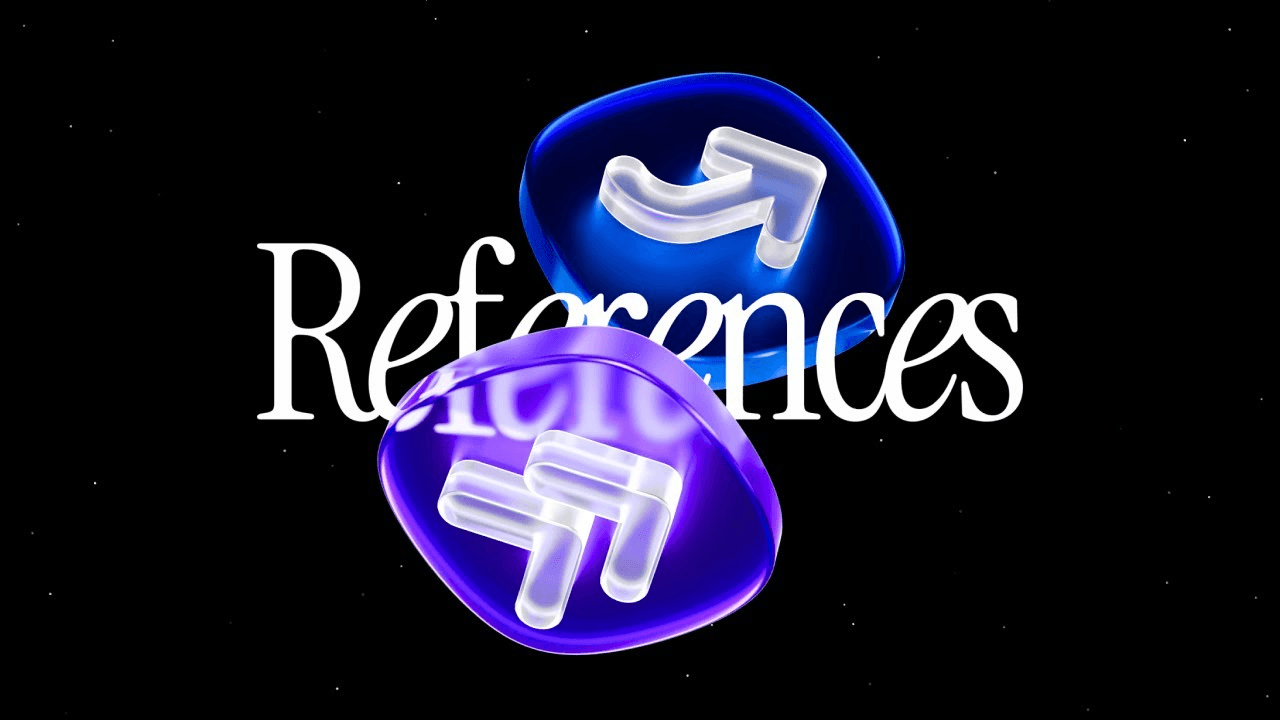5 Must-Have Features Every SaaS Website Needs
5 Must-Have Features Every SaaS Website Needs



Your SaaS website is often the first touchpoint potential customers have with your brand. A well-designed site can make the difference between a visitor bouncing and one becoming a paying customer. But what features are essential to ensure your site not only looks good but also converts? Here are five must-have features that every SaaS website needs.
Your SaaS website is often the first touchpoint potential customers have with your brand. A well-designed site can make the difference between a visitor bouncing and one becoming a paying customer. But what features are essential to ensure your site not only looks good but also converts? Here are five must-have features that every SaaS website needs.
Your SaaS website is often the first touchpoint potential customers have with your brand. A well-designed site can make the difference between a visitor bouncing and one becoming a paying customer. But what features are essential to ensure your site not only looks good but also converts? Here are five must-have features that every SaaS website needs.
In this post:
In this post:
In this post:
Section
Section
Section
Clear Value Proposition
Your value proposition is the single most important piece of content on your website. It’s the first thing visitors see, and it tells them exactly why they should care about your product.
A strong value proposition is clear, concise, and focused on the benefits of your SaaS product. Rather than just listing features, it explains the problem your product solves and the outcomes customers can expect. Think of it as your elevator pitch—if visitors don’t grasp your value proposition within a few seconds, they’re likely to move on.
For example, Slack’s value proposition, “Make work simpler, more pleasant, and more productive,” instantly tells users what the platform aims to achieve and how it’ll benefit them.
Tips for crafting your value proposition:
• Keep it short and easy to understand.
• Focus on customer benefits, not just product features.
• Use language that resonates with your target audience.
Intuitive Navigation
A clean, intuitive navigation is crucial for user experience. If visitors can’t find what they’re looking for, they’ll leave—no matter how great your product is. Your navigation menu should be simple, clear, and easy to use.
Each page on your website should guide visitors toward taking action. Whether it’s signing up for a free trial, reading your blog, or contacting sales, the path should be straightforward. Overloading your navigation with too many options can overwhelm users, so focus on the essentials and ensure they’re easy to access.
Best practices for SaaS website navigation:
• Limit your main menu to essential pages like Home, Pricing, Product, and Contact.
• Use clear labels that describe exactly what the user will find.
• Include a search bar for quick access to specific information.
High-Impact Calls-to-Action
Strong, well-placed calls-to-action (CTAs) are vital for guiding visitors toward conversion. Whether it’s “Start Free Trial,” “Book a Demo,” or “Sign Up,” your CTAs need to stand out and be easy to find. CTAs should be visible above the fold and repeated throughout your website.
But it’s not just about placement—how you phrase your CTAs matters. Action-oriented, benefit-driven language works best. For example, instead of saying “Submit,” use something like “Get Started Now” or “Try for Free.” This small tweak can make a big difference in your conversion rates.
A/B testing different CTAs is an excellent way to optimize performance. You can experiment with different placements, colors, and messaging to see what drives the best results.
CTA optimization tips:
• Use clear, action-driven language.
• Place CTAs in prominent locations (above the fold, at the end of blog posts).
• A/B test different versions to see what resonates with your audience.
Detailed Pricing Page
Transparency is key when it comes to SaaS pricing. Potential customers want to know exactly what they’re getting and what it will cost. A well-designed pricing page is clear, simple, and easy to navigate.
Break down each pricing tier and highlight the features included at each level. Make it easy for users to compare plans side by side, so they can make an informed decision. Be upfront about additional costs or fees—hidden charges are a quick way to lose trust.
One example of a great pricing page is from HubSpot, which provides a clear comparison of each plan, highlights what’s included, and offers flexibility in pricing.
Best practices for pricing pages:
• Clearly differentiate between pricing tiers.
• Highlight key features and benefits for each plan.
• Include FAQs or a chat option to answer potential questions.
Trust-Building Elements
Trust is one of the most critical factors in converting visitors into customers. SaaS buyers want reassurance that your product is reliable and that other people have had positive experiences using it.
Incorporating social proof like customer reviews, testimonials, and case studies can significantly enhance credibility. Display these trust-building elements prominently throughout your website, especially on high-traffic pages like your homepage and product pages.
In addition to social proof, security badges, money-back guarantees, and compliance certifications can further build trust. Make sure users know their data is safe with you by featuring SSL certificates and other security assurances.
Ways to build trust on your website:
• Showcase customer reviews and testimonials.
• Highlight case studies that demonstrate real results.
• Include security badges and guarantees to assure visitors their information is safe.
Conclusion
A successful SaaS website does more than look good—it converts visitors into paying customers. By focusing on these five must-have features—clear value proposition, intuitive navigation, high-impact CTAs, detailed pricing, and trust-building elements—you’ll create a site that not only engages visitors but also drives conversions.
Evaluate your current website against these features and start implementing changes to create a more optimized, conversion-focused experience.
Clear Value Proposition
Your value proposition is the single most important piece of content on your website. It’s the first thing visitors see, and it tells them exactly why they should care about your product.
A strong value proposition is clear, concise, and focused on the benefits of your SaaS product. Rather than just listing features, it explains the problem your product solves and the outcomes customers can expect. Think of it as your elevator pitch—if visitors don’t grasp your value proposition within a few seconds, they’re likely to move on.
For example, Slack’s value proposition, “Make work simpler, more pleasant, and more productive,” instantly tells users what the platform aims to achieve and how it’ll benefit them.
Tips for crafting your value proposition:
• Keep it short and easy to understand.
• Focus on customer benefits, not just product features.
• Use language that resonates with your target audience.
Intuitive Navigation
A clean, intuitive navigation is crucial for user experience. If visitors can’t find what they’re looking for, they’ll leave—no matter how great your product is. Your navigation menu should be simple, clear, and easy to use.
Each page on your website should guide visitors toward taking action. Whether it’s signing up for a free trial, reading your blog, or contacting sales, the path should be straightforward. Overloading your navigation with too many options can overwhelm users, so focus on the essentials and ensure they’re easy to access.
Best practices for SaaS website navigation:
• Limit your main menu to essential pages like Home, Pricing, Product, and Contact.
• Use clear labels that describe exactly what the user will find.
• Include a search bar for quick access to specific information.
High-Impact Calls-to-Action
Strong, well-placed calls-to-action (CTAs) are vital for guiding visitors toward conversion. Whether it’s “Start Free Trial,” “Book a Demo,” or “Sign Up,” your CTAs need to stand out and be easy to find. CTAs should be visible above the fold and repeated throughout your website.
But it’s not just about placement—how you phrase your CTAs matters. Action-oriented, benefit-driven language works best. For example, instead of saying “Submit,” use something like “Get Started Now” or “Try for Free.” This small tweak can make a big difference in your conversion rates.
A/B testing different CTAs is an excellent way to optimize performance. You can experiment with different placements, colors, and messaging to see what drives the best results.
CTA optimization tips:
• Use clear, action-driven language.
• Place CTAs in prominent locations (above the fold, at the end of blog posts).
• A/B test different versions to see what resonates with your audience.
Detailed Pricing Page
Transparency is key when it comes to SaaS pricing. Potential customers want to know exactly what they’re getting and what it will cost. A well-designed pricing page is clear, simple, and easy to navigate.
Break down each pricing tier and highlight the features included at each level. Make it easy for users to compare plans side by side, so they can make an informed decision. Be upfront about additional costs or fees—hidden charges are a quick way to lose trust.
One example of a great pricing page is from HubSpot, which provides a clear comparison of each plan, highlights what’s included, and offers flexibility in pricing.
Best practices for pricing pages:
• Clearly differentiate between pricing tiers.
• Highlight key features and benefits for each plan.
• Include FAQs or a chat option to answer potential questions.
Trust-Building Elements
Trust is one of the most critical factors in converting visitors into customers. SaaS buyers want reassurance that your product is reliable and that other people have had positive experiences using it.
Incorporating social proof like customer reviews, testimonials, and case studies can significantly enhance credibility. Display these trust-building elements prominently throughout your website, especially on high-traffic pages like your homepage and product pages.
In addition to social proof, security badges, money-back guarantees, and compliance certifications can further build trust. Make sure users know their data is safe with you by featuring SSL certificates and other security assurances.
Ways to build trust on your website:
• Showcase customer reviews and testimonials.
• Highlight case studies that demonstrate real results.
• Include security badges and guarantees to assure visitors their information is safe.
Conclusion
A successful SaaS website does more than look good—it converts visitors into paying customers. By focusing on these five must-have features—clear value proposition, intuitive navigation, high-impact CTAs, detailed pricing, and trust-building elements—you’ll create a site that not only engages visitors but also drives conversions.
Evaluate your current website against these features and start implementing changes to create a more optimized, conversion-focused experience.
Clear Value Proposition
Your value proposition is the single most important piece of content on your website. It’s the first thing visitors see, and it tells them exactly why they should care about your product.
A strong value proposition is clear, concise, and focused on the benefits of your SaaS product. Rather than just listing features, it explains the problem your product solves and the outcomes customers can expect. Think of it as your elevator pitch—if visitors don’t grasp your value proposition within a few seconds, they’re likely to move on.
For example, Slack’s value proposition, “Make work simpler, more pleasant, and more productive,” instantly tells users what the platform aims to achieve and how it’ll benefit them.
Tips for crafting your value proposition:
• Keep it short and easy to understand.
• Focus on customer benefits, not just product features.
• Use language that resonates with your target audience.
Intuitive Navigation
A clean, intuitive navigation is crucial for user experience. If visitors can’t find what they’re looking for, they’ll leave—no matter how great your product is. Your navigation menu should be simple, clear, and easy to use.
Each page on your website should guide visitors toward taking action. Whether it’s signing up for a free trial, reading your blog, or contacting sales, the path should be straightforward. Overloading your navigation with too many options can overwhelm users, so focus on the essentials and ensure they’re easy to access.
Best practices for SaaS website navigation:
• Limit your main menu to essential pages like Home, Pricing, Product, and Contact.
• Use clear labels that describe exactly what the user will find.
• Include a search bar for quick access to specific information.
High-Impact Calls-to-Action
Strong, well-placed calls-to-action (CTAs) are vital for guiding visitors toward conversion. Whether it’s “Start Free Trial,” “Book a Demo,” or “Sign Up,” your CTAs need to stand out and be easy to find. CTAs should be visible above the fold and repeated throughout your website.
But it’s not just about placement—how you phrase your CTAs matters. Action-oriented, benefit-driven language works best. For example, instead of saying “Submit,” use something like “Get Started Now” or “Try for Free.” This small tweak can make a big difference in your conversion rates.
A/B testing different CTAs is an excellent way to optimize performance. You can experiment with different placements, colors, and messaging to see what drives the best results.
CTA optimization tips:
• Use clear, action-driven language.
• Place CTAs in prominent locations (above the fold, at the end of blog posts).
• A/B test different versions to see what resonates with your audience.
Detailed Pricing Page
Transparency is key when it comes to SaaS pricing. Potential customers want to know exactly what they’re getting and what it will cost. A well-designed pricing page is clear, simple, and easy to navigate.
Break down each pricing tier and highlight the features included at each level. Make it easy for users to compare plans side by side, so they can make an informed decision. Be upfront about additional costs or fees—hidden charges are a quick way to lose trust.
One example of a great pricing page is from HubSpot, which provides a clear comparison of each plan, highlights what’s included, and offers flexibility in pricing.
Best practices for pricing pages:
• Clearly differentiate between pricing tiers.
• Highlight key features and benefits for each plan.
• Include FAQs or a chat option to answer potential questions.
Trust-Building Elements
Trust is one of the most critical factors in converting visitors into customers. SaaS buyers want reassurance that your product is reliable and that other people have had positive experiences using it.
Incorporating social proof like customer reviews, testimonials, and case studies can significantly enhance credibility. Display these trust-building elements prominently throughout your website, especially on high-traffic pages like your homepage and product pages.
In addition to social proof, security badges, money-back guarantees, and compliance certifications can further build trust. Make sure users know their data is safe with you by featuring SSL certificates and other security assurances.
Ways to build trust on your website:
• Showcase customer reviews and testimonials.
• Highlight case studies that demonstrate real results.
• Include security badges and guarantees to assure visitors their information is safe.
Conclusion
A successful SaaS website does more than look good—it converts visitors into paying customers. By focusing on these five must-have features—clear value proposition, intuitive navigation, high-impact CTAs, detailed pricing, and trust-building elements—you’ll create a site that not only engages visitors but also drives conversions.
Evaluate your current website against these features and start implementing changes to create a more optimized, conversion-focused experience.
Book your demo today.
Manage your analytics & sales all in one place and transform your business with Scalable.


Book your demo today.
Manage your analytics & sales all in one place and transform your business with Scalable.

Book your demo today.
Manage your analytics & sales all in one place and transform your business with Scalable.
